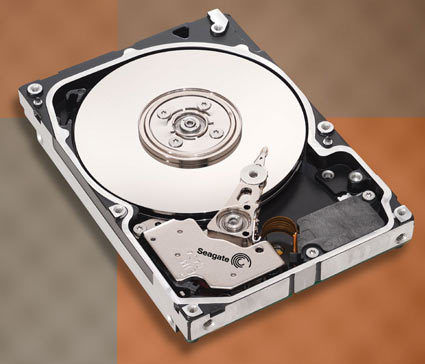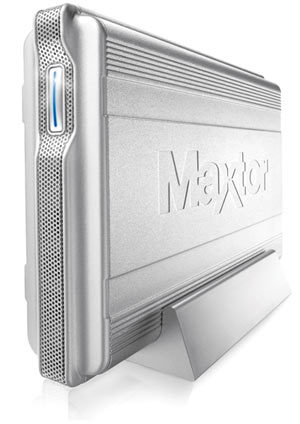The Best Platform For Small Business Server 2003
A Whole New World Of Storage
You can't be too safe when it comes to server-class storage. SAS is the solid bet.
Gone are the days of IDE and SCSI hard drives - good riddance! Today's storage landscape is much more flexible, faster, and in many cases, cheaper. Entry-level servers generally use SATA (Serial ATA ) technology. Although the drive manufacturers usually recommend against it, I've found that SATA suffices today on SBS machines performing mail and file server duties for up to 10 client systems at throughputs of up to 75 MB/s per drive.
The biggest worry with SATA drives is longevity - they aren't built to withstand the rigors of 24/7 operation and as such are more prone to failure. That's why RAID is practically imperative on a server, whether you opt for RAID 1 or 5, two of the most commonly supported redundancy configurations. In many cases, it may even make sense to mount an externally accessible hot-swappable drive on your pedestal chassis, for easy access.
Serial Attached SCSI (SAS) is an even sweeter alternative; according to Seagate Research, it is expected to virtually replace parallel SCSI by 2008. The technology is perfectly suited to mid-range and higher SBS boxes, where it costs the same as SCSI and enables unprecedented levels of flexibility. You see, SAS features transfer rates of 3 Gbit/s, tagged queuing, long and rather easy to handle cables, scalability through expanders, and best of all, SAS controllers are backwards compatible with SATA drives. As a result, it's easy to construct a best-fit combination of reliable SAS and high-capacity SATA drives using a single controller.
The Best Bets In Backup
External HDD backup is inexpensive and enables plenty of upgradeable capacity. However, it's not the safest way of doing a backup, since hard drives can still fail.
Data on a server is almost always more sensitive than your average workstation. SBS gives you the ability to map each user's My Documents folder to the server, and of course, mailboxes are held in an Exchange store. Still, if there's a robbery or fire on the premises, you could lose all of your data. Don't even think about deploying SBS 2003 without first exploring options for redundant backup.
Tape backup is the traditional fallback, but there are enough downsides to tape that I shy away from it whenever possible. Optical media is a viable option, too. Then again, spanning a 146 GB partition across DVDs - even dual-layer - is a painful proposition. More specialized devices, such as Iomega's REV Autoloader, give you the convenience of cartridges across a much faster interface than tape, but also require a notable investment.
Get Tom's Hardware's best news and in-depth reviews, straight to your inbox.
External hard drives deliver a better balance of price, capacity, and performance, especially now that eSATA drives and enclosures are becoming more common. On a basic server with two mirrored 160 GB SATA drives, use a single USB 2.0 drive to make daily incremental backups. For larger data repositories, check out hardware such as Sonnet's Fusion 400 (www.sonnettech.com), a four-drive eSATA enclosure able to address super-sized SBS servers with much greater performance.
Current page: A Whole New World Of Storage
Prev Page Navigating The Processor Landscape Next Page Don't Forget Power

